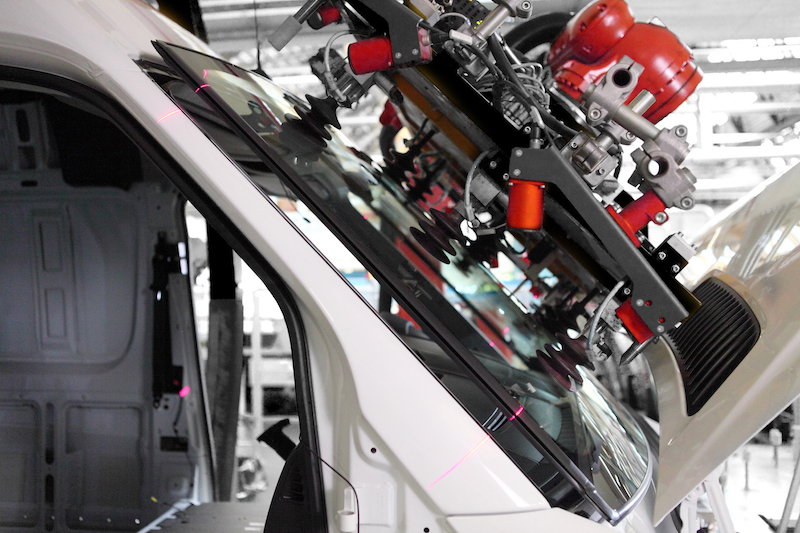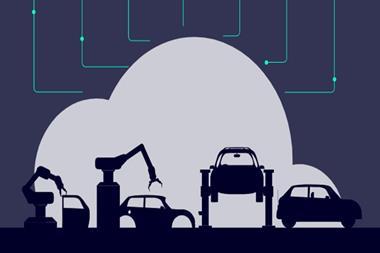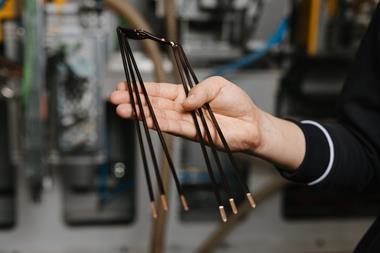
With the growth in automated assembly applications comes a demand for quality data and improved insights
 The prevalent dimensional control strategy of the automotive industry has been to incorporate various in-line and near-line measurement devices into production lines. Different approaches have been successfully implemented, from a few single cells along the assembly process to highly sophisticated distributed measurement concepts. Debates have ensued around whether to increase the quantity of in-line measurement systems or to migrate back toward off-line devices which support higher accuracy but less product throughput.
The prevalent dimensional control strategy of the automotive industry has been to incorporate various in-line and near-line measurement devices into production lines. Different approaches have been successfully implemented, from a few single cells along the assembly process to highly sophisticated distributed measurement concepts. Debates have ensued around whether to increase the quantity of in-line measurement systems or to migrate back toward off-line devices which support higher accuracy but less product throughput.
Current trends show more vehicles being produced based on specific customer orders, with unique customer configurations and pre-determined delivery dates. This is forcing OEMs to look differently at manufacturing processes and consider that each step may need to be controlled individually. If this is the case, new strategies and tools will be required to support this style of production. Consequently, many dimensional control plans are now beginning to follow the demands of ‘Industry 4.0’ with its intention to better control manufacturing processes, as opposed to measuring their quality afterwards.
Taking control where possibleExisting dimensional measurement philosophies of leading OEMs call for in-line and near-line measurement stations to be strategically placed at key locations throughout the production line. The locations are chosen based on where one is able to measure the specific features on the vehicle that best indicate the quality of the upfront production processes.
The resultant data – usually trend charts and limit-based qualification – is used for making reactive adjustments to the process. Some manufacturers have taken additional steps and implemented a series of trending-limits that allow them to make the required adjustments before a line stop is precipitated. However, even in this progressive case a certain number of vehicles are generally produced before the corrective actions can be taken – potentially resulting in jobs requiring rework, unwanted scrap, and costly downtime.
Leading edge controlFuture automotive production lines will be driven by processes that employ a form of inherent process control. In fact, this change is already being manifested in Net Form and Pierce applications designed to enhance vehicle fit and finish, as well as numerous, basic robot guidance applications which work to eliminate user influence and process variation.
Perhaps the best examples of inherent process control in the automotive manufacturing industry are the advanced closure load applications now being deployed around the globe. These systems use highly-accurate iterative vision solutions to optimise the process of fitting doors, hoods, roofs and other body panels into the various openings of the vehicle.
This iterative, or BestFit, approach not only compensates for normal process variation but is also capable of implementing various complex fitting ‘prioritisations’ and ‘weightings’ – it can even take into account design considerations which create intricate rules regarding the symmetry of gaps on opposite sides of the vehicle. The end result of these breakthroughs is improved overall product quality and a greatly reduced vehicle rework percentage (in some cases rework has been reduced by more than 80%).
Inos Automation offers a portfolio of solutions that support the full spectrum of these innovative, powerful applications. Based on a family of digital sensors in combination with a user-friendly software platform, Inos robot guidance solutions are preferred and trusted by the world’s leading automotive manufacturers.
A combination of control and measurementWhile automated assembly applications are increasing in number and importance, there is also an ever-increasing demand for quality data and improved insights into the manufacturing process. There needs to be a way to leverage the automated assembly systems in other stages of the manufacturing process. Fortunately, Inos solutions creates unique, powerful synergies between automated assembly and in-line measurement stations.
Robot guidance systems can be designed and implemented in a way to use the already existing sensors to conduct a ‘quality check’ at the end of every single cycle. This simultaneously reduces the number of mandatory in-line cells and generates valuable dimensional information, which can be stored in a common database and accessed using standard web browser tools.
Furthermore, by linking multiple cells to a common database, robot guidance stations can employ data gathered by in-line dimensional gauging cells to proactively adjust automated assembly operations and thereby create a formidable closed-loop system where vehicle quality is optimised and the ultimate process control is exercised.





































